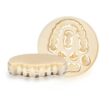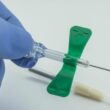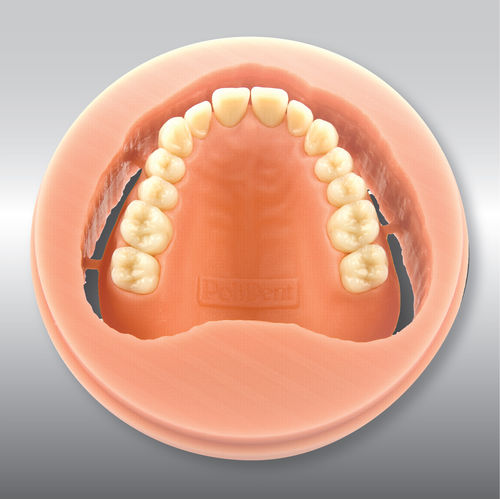It’s stating the obvious but if you plan on buying prescription glasses or sunglasses online then you’ll need to have a copy of your optical prescription with you in order to complete the purchase. If you already have one laying about the house somewhere then you’ll have to check its current validity because human eye sight tends to change with age so optical prescriptions have a certain validity lifespan.
Your prescription should be OK to use if:
You are younger than 70 and your prescription was taken within the last two years or, If you’re aged 70 or over, your spectacles prescription should have been taken within the last 12 months.
Note: The above validity periods are recommended by the Association of British Dispensing Opticians.
Should you need a new prescription you’ll have to go to your local optician to have an eye examination. At the time of writing, we recommend Specsavers and Tesco for offering the cheapest eye tests but by all means shop around because any licensed optician will do. While at the eye exam you should ensure that you ask for your pupillary distance (PD) measurement because this measurement is key part in obtaining glasses which are a perfect fit. Usually this will be free but some opticians may add a nominal surcharge for the service. While it is essential that Varifocal and Bifocal customer have an optician take this measurement, all other customers have the option of taking their PD measurements at home if the forget to ask their optician for it during the eye examination:
Home Pupillary Distance Measurement (a.k.a. PD):
This is the measurement in mm between the 2 pupils when looking into the distance. This figure is usually written as “PD 63” but can sometimes be written “PD 63/59”. In the latter example the first number, 63, is the measurement between the pupils for when the eyes are looking off to the distance and the second number, 59, is the measurement for reading (or viewing things at close range). The difference between the two measurements is explained by the fact that when we look at close-range objects the eyes converge and thus the distance between the pupils narrows.
It’s actually pretty easy to measure your PD and all you need is a ruler and a friend to help you! Whilst you look into the distance ask your friend to measure from the centre of the right pupil to the centre of the left. It’s as simple as that.
Following your eye examination, your optician is obliged by law to give you a written copy of your prescription. Some opticians will try to pressure you into buying glasses from them after your eye test and may make excuses for not handing over your prescription. This [as you’ve already guessed] is to try to prevent you from buying your eyeglasses elsewhere but if you’ve paid for your prescription you are entitled to possession of it. That’s the law and it’s also written into the UK General Optical Council’s regulations. So if your optician doesn’t want to hand it over, you can politely say any [or even a few] of the following to loosen that prescription-withholding grip right away:
1. I’ve paid for it therefore it’s mine and consumer protection laws dictate that you have to give me my written prescription immediately following payment for my eye test.
2. I need it for work – they won’t accept an opticians receipt to pay for my eye test.
3. My doctor wants a copy.
Deciphering your prescription:
Strictly speaking, most people will not need to understand anything written on their prescription to order glasses on line as they shall only be required to copy the details into an equivalent prescription form on the website while taking extra care to ensure that the correct plus or minus sign is entered online. That said there’s nothing on the prescription that’s difficult for the lay person to comprehend and some knowledge may make the consumer more confident in their purchases so here we go.
All prescriptions contain numbers written under the flowing headings:
Sphere: The number in this box indicates the strength of your prescription in 0.25 increments. A negative number here implies that you are short sighted and a positive number indicates that you are long sighted.
Cylinder (Cyl) and Axis: The numbers in these boxes are measurements of the astigmatism of the eye. (These are not applicable to all prescriptions and it is quite normal to have a Sphere value only). Cyl numbers represent the amount of correction needed while the numbers Axis represents the location of the astigmatism.
Near Addition: If you are buying glasses specifically for reading, for computer work or for intermediate range viewing, the Add or Near Addition value is the amount to add to the sphere (SPH) value.
Other terms which may be found on your prescription include:
OD – this is Latin and means “right eye”
OS – again this is Latin and means “left eye”
BVD – this is the back vertex distance and is the distance from your eye the lens was held when you were tested. Please add this to the additional comments.
BALANCE:
Written on prescriptions when there is little or no vision in one eye and the optician wants to make sure that the lenses match weight and thickness for cosmetic reasons.
PRISMS:
Prisms values are written on prescriptions when people have a slight squint or lazy eye. You should enter your prisms values into the extra information box, with the prescription.
Note: Prisms are more expensive than normal lenses and you will have to email the website with your prescription for a lens price quotation.
Visual Acuity: “VA” stands for visual acuity. This represents the line of letters you can read on the chart and VA values are not required to order glasses.
VA indicates the standard of vision (for each eye) when corrected.








